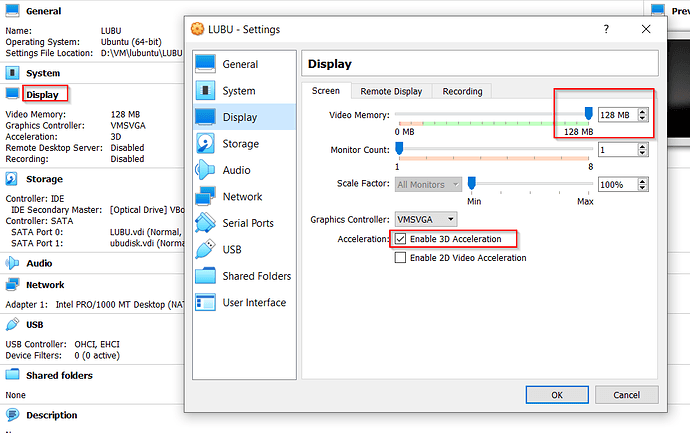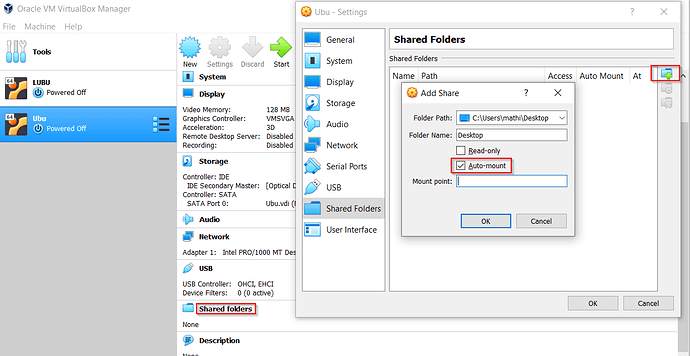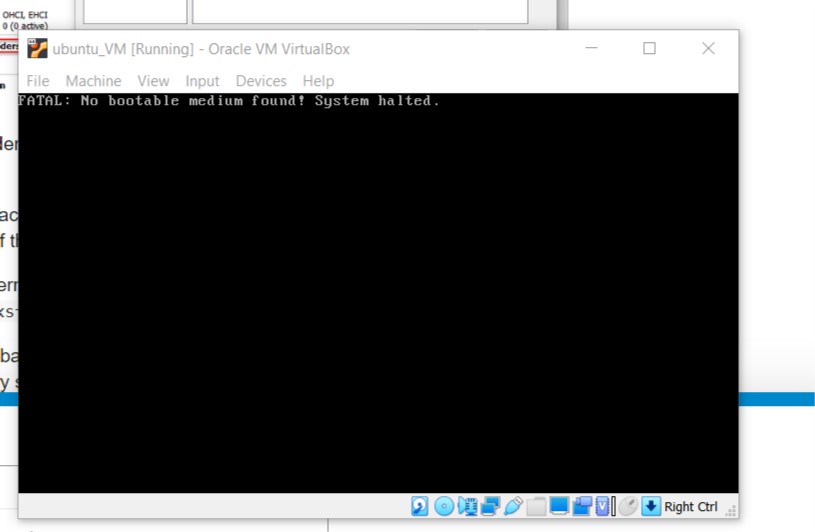I own a windows based laptop. What is the more effective, cheaper, easier way to work on linux/unix environment on a windows system?
Thanks @thecil
VMware seems to be a paid product and virtualbox is free of cost to use. Am I right?
What is your opinion on windows subsystem for linux?
Which option is more effective, cheaper and easier to use?
Thanks and regards,
Pradeep
might depend of your pc specs, try virtualbox for free and should be enough for academy courses.
vmware has a lot of nice functions but has you said, is paid product.
As @thecil said, download VirtualBox. I should give you everthing you need.
To get you up and running without much trouble, download the latest version:
https://www.virtualbox.org/wiki/Downloads
I use Ubuntu as guest system on my Windows 10 host. It’s quiet reliable and easy to install.
Before you install the guest OS system, I would recommend the following VM settings:
-
Max out the video memory and activate 3D accelaration.
Once your OS is installed, install the VirtualBox guest additions by inserting the ISO
- You find the guest additions in the VMs window main menu:
Devices --> Insert Guest Additions CD image... - This installs all the drivers
- It also allows flexible screen resizing of your VM’s window.
Installation of the guest additions:
- Open a terminal and change into the path where the ISO is mounted. When using Ubuntu it should be here:
cd /media/<YOUR-USERNAME>/VBox_GAs_6.0.18 - Check if the package build-essential is installed. It contains the gcc compiler among other build tools, that are necessary for the installer script to be able to compile the kernel modules.
sudo apt install build-essentialConfirm the install with “y” - Run the installer script: (This may take a while depending on your CPU)
sudo /media/<YOUR-USERNAME>/VBox_GAs_6.0.18/VBoxLinuxAdditions.runPlease verify your version! - Restart your VM:
sudo shutdown -r now
Tips:
- If your mouse cursor is locked inside the VM’s windows. You can get it back to your host by pressing the right Ctrl key.
- Activate the shared clipboard in order to copy data from between your host and VM:
VM window's main menu --> Devices --> Shared Clipboard --> Bidirectional
Shared folders
You can mount a shared folder to access files (your source code, git repos for example) from your host like so:
When your lauch your VM, your folder is mouted here:
/media/sf_<YOUR_FOLDER>
However it might be, that you can’t access your files and get a permission denied error. That’s because your user is not member of the vboxsf group yet.
Add your user to the group from a terminal:
sudo adduser <YOUR-USER> vboxsf
Restart the VM or logout and log back in (should be enough) to reload the permissions.
Now you can access your files. They should also be accessible in your file browser as a mounted resource.
Disclaimer
This is not meant to be a complete tutorial but to make life a little easier for new users.
In case something is missing or incorrect, please don’t hesitate to comment below and I will correct my post.
Happy hacking! 
@MattMiller beautiful man 
 , we should tell @ivan or @filip to create a category for newbie guides for those students that does not know too much of computers as some of us, content like this can be easily forgotten in this thread and truly should be a shame…really thanks for this.
, we should tell @ivan or @filip to create a category for newbie guides for those students that does not know too much of computers as some of us, content like this can be easily forgotten in this thread and truly should be a shame…really thanks for this.
@thecil Yes, that would be a great idea. … some kind of “knowledge base”. However these KBs need some “gardeners” to keep the quality of the posts to a certain standard. I hereby offer my assistance as a former Confluence gardener.
GNU/Linux can be a pain for new users. I had my fair share of it long time ago…
However it’s great for programming and so much fun to learn once people get into it.
@MattMiller i agree with you in the gardeners, some basic guides like that you post it can be pretty solid for most people.
And yes, linux can be a pain, but i do really love it and its more useful to know for the new techs on the crypto space. Lets see if we can reach our senseis to know what they think about the idea.
Im in to help on this if it goes on.
I got this error. I gave the correct path. I checked it.
I used to be an Oracle Database Administrator before(say 6 years ago). Currently, I am not working in the IT industry. However, I am not comfortable with software installations. I have experience working on AIX and Redhat Linux. If the OS is installed, I know how to work on them.
I think the user interface of React, Truffle or any other tools that we use here(in Blockchain) is same, be it linux, Mac OS or Windows. Am I right?
If that is the case, I will practise on Windows itself.
I have allocated some RAM and Hard disk space, while installing virtual box. How to release them safely and uninstall virtual box.
Thank you.
I have uninstalled Oracle virtual box from windows OS.
Thanks and regards,
Pradeep
Hi Pradeep,
You weren’t able to boot from the Ubuntu ISO in order to install it?
Hi Matt,
I could not install ubuntu in first place.
Virtual Box could not identify the location of ubuntu image. I gave the correct path. Do not know what went wrong.
I did not want to spend time on this. Therefore I uninstalled virtual box.
Thanks and regards,
Pradeep
I have used windows subsystem for linux for simple things like docker,python etc running as Ubuntu 18.04 …
Second link here very useful
I
Worst case scenario you can spin up free Linux in AWS, Google, and Azure or spend $ 5 a month in DigitalOcean… I was introduced to DigitalOcean in 2012 I was spinning up Ubuntu 12.04 Droplets trying to mine Peercoin … Today I still use it for with OpenVPN… I change ssh port and use MFA (Duo) to access the server remotely…
VirtualBox is definitely an option, but if you are comfortable with partitioning your hard drive and you have some spare space on your hard drive, then installing linux alongside windows might be a better option. I use linux mint, the installer is quite good and user friendly, and it will offer you to set up a dual boot system. At boot time, my computer displays a menu where i can select if i want to boot in windows or in linux.
Thanks for the advice
Would recommend resizing your hard drive and install Linux on the extended partition to create a multi-boot system. This will not interfere with your windows system.
Thanks for the advice.
Thanks for the really helpful pointers. I’m a newbie to this, but I’ve managed to set up a Linux (Ubuntu) VM on my Windows 10 laptop using VirtualBox.
I found the following beginner’s guide to the install and config process very useful. It may also help other newbies: www.youtube.com/watch?v=5sa0acU4pmY
And it also nicely complemented your guide - I used the video and then followed your guide for additional config 
@thecil FYI
Not forgotten yet cos I found it 4 months later 
I plan to spin up my vmware with Linux mint on my Windows 10 as I have done this before.
If that doesn’t work I may try VirtualBox as its free
@MattMiller useful tips, thanks
What is the difference between running a Linux VM and getting a dedicated Linux PC?
Or in other words are there limitations when running the VM, from a coding/devop point of view?



